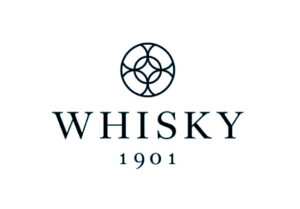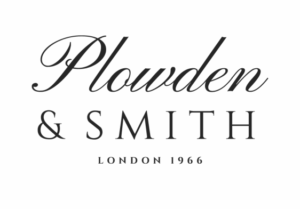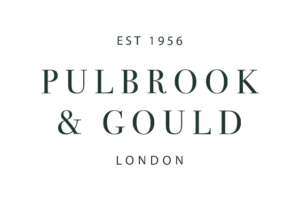For the very first time, Koopman Rare Art, one of the world’s leading dealers specialising in antique silver, gold boxes and objects de vertu, is confirmed for the LAPADA Berkeley Square Fair, taking place 28 October to 2 November in Mayfair. They will be exhibiting their collection of Antique Jewellery and gold boxes.
Founded in 1952 by brothers Jacques and Eddy Koopman, the Koopman name has long been synonymous with excellence and connoisseurship. Located from 1669- 2021 from their iconic location at the entrance of The London Silver Vaults on Chancery Lane, Koopman has sourced museum-quality pieces by master silversmiths such as Paul Storr, Paul de Lamerie, and Benjamin Smith.
In 2021, Koopman Rare Art moved its gallery to Dover Street, Mayfair, and expanded its repertoire to include fine antique jewellery, led by Kimberley Smith. This collection will be displayed at LAPADA. Koopman’s reputation is built on an unwavering commitment to provenance, scholarship and historical significance.
This year, Koopman Rare Art will be among over 80 leading exhibitors at the Fair, presenting an extraordinary selection of art, antiques, design, and decorative objects. From fine jewellery and rare furniture to historic tapestries, ceramics, clocks, silver, and paintings, every piece on display has been rigorously vetted to meet the highest standards of authenticity and craftsmanship.
Highlights from Koopman’s collection at this year’s LAPADA Berkeley Square Fair include:
• An Exquisite Diamond Necklace, Circa 1940s: A remarkable example of mid-century glamour, this necklace features a front composed of graduated arched links, pavé-set with circular and single-cut diamonds. These are bordered on each side with rows of collet-set circular-cut diamonds, leading to geometric ribbon scroll clasps adorned with circular and baguette-cut diamonds. The back of the necklace comprises two rows of collet-set brilliant-cut diamonds and a further segment of arched links. Ingeniously designed, the necklace detaches to form two bracelets. Crafted in platinum. Total diamond weight approximately 60.00 carats.

Exquisite Diamond Necklace.
• A 1930s Diamond Bird Brooch: A stylised, three-dimensional brooch depicting a flying bird, set with a circular-cut diamond body, baguette-cut wings and tail, and cabochon ruby eyes. Bearing Italian assay marks. Set in platinum, this brooch exemplifies Art Deco elegance and craftsmanship.
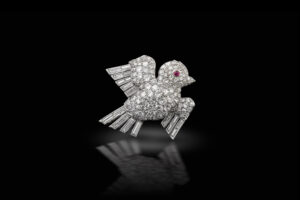
A 1930s Diamond Bird Brooch.
• A 1940s Gold and Diamond Strap Bracelet: Of bold criss-cross design, this retro strap bracelet is set intermittently with round brilliant-cut diamonds totalling approximately 15.00 carats. Crafted in 18k gold, with French assay marks. A striking example of 1940s design and luxury.

1940s Gold and Diamond Strap Bracelet.
• Fancy Yellow Diamond and Diamond Ring, Raymond Yard: Centred with a 4.44-carat emerald-cut Fancy Yellow diamond of VVS2 clarity, this exceptional ring is accented with approximately 0.80 carats of single-, trapeze-, and bullet-cut white diamonds. Signed Raymond Yard, a celebrated American jeweller renowned for exquisite craftsmanship and timeless design.

Fancy Yellow Diamond and Diamond Ring.
• A Lapis Lazuli, Platinum, and Diamond Necklace, Cartier, Circa 1935: This elegant necklace features three rows of graduated lapis lazuli beads at the front and two rows of uniform smaller beads at the back. The rows are divided by two geometric, diamond-set buckle-form panels, one forming the clasp. Signed ‘Cartier London’, this piece epitomizes the refined artistry of the Art Deco period.
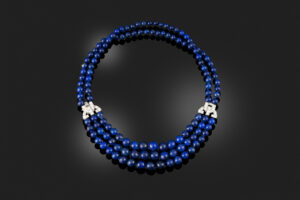
Lapis Lazuli, Patinum and Diamond Necklace.
• An 18th Century Jewelled Gold and Enamel Snuff Box, Circa 1780: Crafted in either Berlin or Geneva, this oval-form snuff box is decorated throughout with translucent royal blue enamel over a chevron engine-turned ground. Tiny gold paillon stars are inlaid within scrolling motifs, and the lid is embellished with collet-set old mine diamonds at the intersections. Surrounding borders feature chased gold roses and leaves enhanced with green enamel, all set on a textured sablébackground. Classical enamelled vases divide the sides. Later French control marks present.
• A George III 18ct Gold Snuff Box, Alexander Strachan, London, 1826: With goldsmith’s mark of James Strachan, this finely crafted rectangular box features engine-turned decoration to the base and sides. The cast thumbpiece is designed as a shell flanked by flowers and a Neptune mask. The lid boasts a richly cast and applied chinoiserie garden scene with floral scrolls, shells, and two phoenixes. At its center, a finely detailed plaque depicts storks by a tranquil waterside under an overhanging tree. Length: 8.5 cm; Weight: 212 g.
A 19th Century Russian, Turquoise-Set Gold Snuff Box, Attributed to Carl Helfried Barbé, St. Petersburg, Circa 1825: Of oblong form, this rare Russian snuff box is lavishly set overall with cabochon turquoise stones. The thumbpiece is richly chased with rocaille and scroll motifs in gold. Though unmarked, it is attributed to Carl Helfried Barbé, a prominent St. Petersburg goldsmith. Length: 7.5 cm.

19th Century Russian Turquoise-Set Gold Snuff Box.
Elizabeth Shanks, LAPADA CEO, said: “LAPADA is delighted to welcome Koopman Rare Art for the first time this year, marking the beginning of a distinguished collaboration that celebrates exceptional jewellery rich in history. We look forward to presenting this remarkable collection to London’s discerning arts, luxury, and antiques community this autumn, further reinforcing our status as a premier destination for international collectors. “






